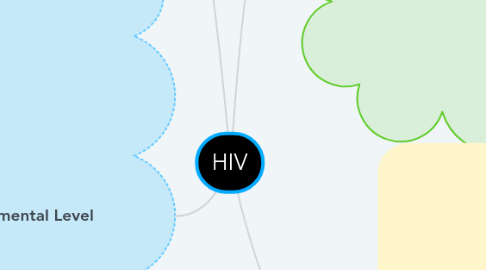HIV
by Keane Trautner


1. Exo/Community Level
1.1. Number of PCPs in the affected individual’s area, including those who are accepting of LGBTQ patients
1.2. Transportation to/from PCP or other healthcare office
1.3. Local support groups for persons with, and those affected by HIV
1.4. Sexual education curriculum in schools with a focus on STI/HIV prevention
1.5. Lack of free clinics
1.6. Presence of community stigma related to diagnosis of HIV
1.7. Lack of public transportation
1.8. Availability of meds for treatment of exposure
2. Macro/Institutional/Governmental Level
2.1. Universal health care coverage for all, including those with preexisting HIV
2.2. Government-funded needle exchange/clean needle programs
2.3. Mandatory STD and HIV testing of prison inmates, notably a high risk population
2.4. Laws that make it illegal to discriminate against sexual preferences
2.5. Increase access to STD/HIV testing by placing clinics in areas that see high foot traffic
2.6. Form a panel or government agency to assess best practice related to HIV education
2.7. Government funding for high school and college classes on high risk HIV practices
2.8. Fun fair activity put on by the local health department where people can learn about HIV, high risk practices and also participate in fun activities for all ages, funded by the state or federal level
2.9. Government funded research through NIH DAIDs to explore vaccine options (HVTN 085)
3. Micro/Individual Level
3.1. Health Literacy
3.1.1. Sexual protection
3.1.2. Knowledge of the disease
3.1.2.1. Undetectable = Untransmittable
3.2. Socioeconomic status
3.2.1. Expense of medication
3.2.2. Risk of acquiring HIV
3.3. Geographical location
3.4. IV Drug Use
3.5. Appropriate testing for those at risk
3.6. Identification of coping mechanisms
3.7. Adherence to prescribed pharmacotherapy
3.8. Transparency of HIV Status and accountability
3.9. Stigma of using condoms and subsequent lack of use (Starks, Payton, Golub, Weinberger, Parsons, 2014).
3.10. Access to and use of technology (i.e. cell phones) as a PREP adherence tool
4. Meso/Family Level
4.1. Maternal knowledge of breastfeeding and transmission
4.1.1. Depending on access to ART
4.2. Use of antiretroviral therapy during pregnancy
4.2.1. Providing appropriate followup care to ensure newborn's health
4.2.2. Adequate understanding of birthing options
4.3. Appropriate use of pre/post use of prophylaxis medications prior to intercourse, pregnancy, and breastfeeding
4.4. Awareness of potential for transmission within the house/community space, such as razors, oral care, proper disposal of feminine products.
4.5. Presence of a healthy support system
4.6. Stigma from family and loved ones
4.7. Family's financial ability to obtain proper treatment
4.7.1. Family socioeconomic status
